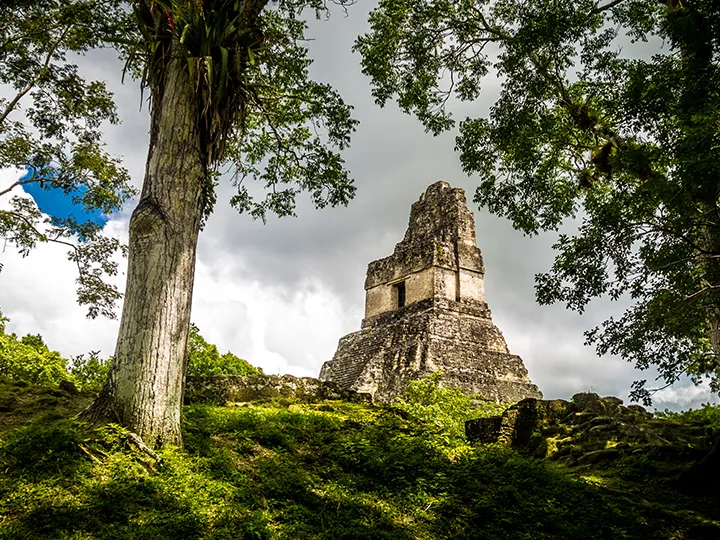Petén
The cradle of ancient mayan civilization.
Petén
Your window to the past.
Within its territorial limits, the legends of the Mayan civilization are born, finding their maximum expression, mainly during the pre-classical and classical periods, and for this reason, it is one of the most surprising in the world. Upon arrival, you will find fascinating archaeological sites that are surrounded by a lush and dense tropical forest that has kept them well protected, among them, the Tikal National Park that was declared a Natural and Cultural Heritage of Humanity by UNESCO in 1979, the El Mirador-Río Azul National Park with the La Danta pyramid, the largest in volume in the world, the Yaxha-Nakum-Naranjo National Park, the Uaxactun Archaeological Park, where the equinox can be seen from the Mayan astronomical center. For this reason, Petén is considered one of the most important places of pre-Columbian occupation. It contemplates the beautiful Lake Petén Itzá, the City of Flores Island, two Maya Biosphere Reserves, seven National Parks, five Wildlife Refuges and four protected biotopes, among other diverse points to explore, and added to this, the exquisite gastronomy made with local ingredients and the kindness of its people, so to get to know it, it is ideal to plan several days of stay.


Flores
It is a small island located in Lake Petén Itzá, connected to the shore by a half-kilometer long causeway. It has shops, restaurants, hotels and boat services. The city has architecture from the 19th and early 20th centuries; with Moorish, Victorian English, Caribbean and other local styles influence. In its oldest buildings, the classic shell lintel on the inner edge of doors and turned wooden balconies is detailed, making it an incredible historical complex.
Tikal Archeological Site
Tikal is the largest pre-Hispanic settlement in Guatemala, with more than 3,000 archaeological structures that represent an ancient city that dominated a vast territory during the Preclassic and Classic periods. Tikal was occupied for more than 1,500 years (600 BC to 900 AD). It features monumental architecture with temples in the form of stepped pyramids, the Great Jaguar (Temple I), the Temple of the Masks (Temple II), the Temple of the Two-Headed Serpent (Temple IV) and the Temple of the Inscriptions (Temple VI), plazas, commemorative complexes, the Plaza of the Lost World, ball courts, twin pyramid complexes, a huge collection of carved monuments and a large number of peripheral sites around it. It was declared the first World Cultural and Natural Heritage of Humanity in 1979 by UNESCO. The name Tikal means “City of Voices”.


El Mirador Archeological Site
It is the largest Mayan city in Guatemala discovered to date, with an area of 3,000 square kilometers and is unique worldwide as it contains ancient monuments within a biological environment of the spectacular subtropical forest, with numerous animals and plants in serious danger of extinction cohabiting in the same place. Within it, warriors, nobles, artisans, artists, priests and workers lived together under a hierarchical social order. Its occupation corresponds to the Late Preclassic period, with two large architectural complexes standing out: the Tigre Complex and the La Danta Complex, with a structure 75 meters high, making it easy to distinguish. There are other sites such as El Tintal, La Florida, La Muralla and La Wakna.
Yaxha Archeological Site
The name Yaxha means “Green Water” and it has plazas and acropolises that are connected to each other through sacbes. Hieroglyphic inscriptions indicate that it was inhabited between the Early Classic and Late Classic periods. The complex has medium and large temples, twin pyramid complexes, ball courts, and palaces. It is characterized as a religious ceremonial site that can be visited and explored. There is also a lagoon of the same name where you can take advantage of visiting the Topoxte archaeological site, which is located on an islet.
Petén, exploring the mayan world.
Step into the heart of the mayan world with awe-inspiring ruins and lush tropical jungles in Petén.

